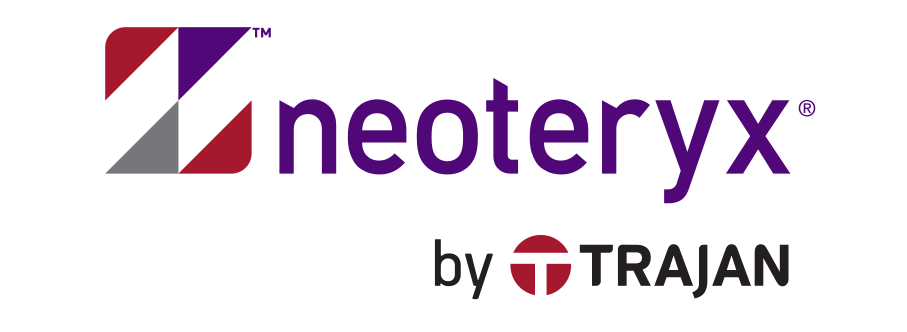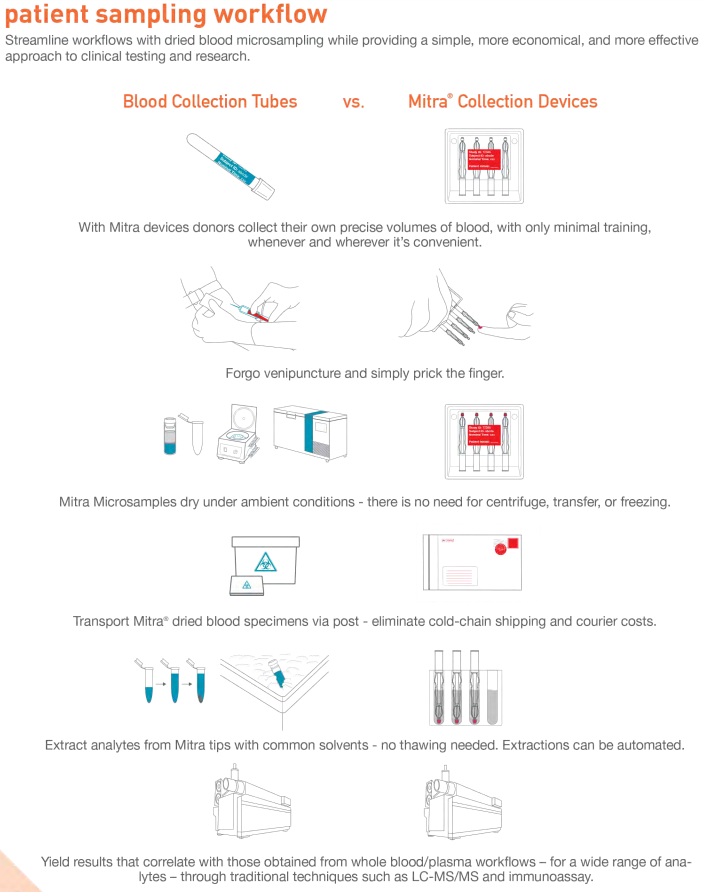Share this
better clinical laboratory workflow with microsampling
by Neoteryx Microsampling on Jun 21, 2018 2:11:00 AM
 We live in an age of simplification and streamlining, in which important things seem to be getting ever smaller. In clinical labs, executives and lab directors are in search of new ways in which to eliminate waste, make operations more efficient, and implement a smarter and simpler clinical laboratory workflow.
We live in an age of simplification and streamlining, in which important things seem to be getting ever smaller. In clinical labs, executives and lab directors are in search of new ways in which to eliminate waste, make operations more efficient, and implement a smarter and simpler clinical laboratory workflow.
There are numerous schools of thought on how to improve clinical lab workflow. One new technology worth exploring is microsampling.
This revolutionary blood collection technology carries a whole host of implications that can impact lab operations, potentially making clinical lab workflow less cumbersome, less expensive, and more in tune with overall trends of process improvement.
Here are a few key ways in which implementing microsampling can improve clinical laboratory workflow.
Remote Sampling
With minimal training, patients and study participants can collect their own samples, anywhere, anytime. For them, that means less travel, less hassle, and less time in the waiting room, because their number of lab visits are reduced. For you, that frees up significant staff, time, space, and energy in the lab, which can be applied to more fruitful endeavors.
Eliminating Venipuncture
You can now apply volumetric absorptive microsampling in the lab to replace traditional venipuncture blood draws and wet blood samples. The patented VAMS® technology is a quantitative, volumetrically accurate dried blood collection technology; which have been shown to be a viable alternative to venipuncture blood collection in many cases. According to the medical and scientific literature, Mitra devices can generate results that correlate with data from wet blood samples.
Eliminating Cold Chain Shipping and Storage
With microsampling, specimens dry on the device under ambient conditions, and can then be sent to central labs through standard post. There is no need for centrifuge, transfer, freezing, or the costly equipment and labor those require.
Automated Extractions
Numerous analytes can be extracted from a Mitra® device using common solvents. There is no thawing necessary. And exciting and innovative solutions are available for extraction automation, customized to the needs of improving your clinical workflow.
Getting Results
The correct use of microsampling technology generates results that correlate with those associated with plasma and wet blood, through accepted techniques, including immunoassay and LC-MS/MS.
Ready to learn more about what you can do with microsampling? Reach out to a Microsampling Specialist, and discover how this next-generation dried blood sampling technology will improve clinical workflow and change clinical and hospital labs for the better.
Image Credits: Trajan, Neoteryx, Shutterstock
Share this
- Microsampling (206)
- Research, Remote Research (119)
- Venipuncture Alternative (105)
- Clinical Trials, Clinical Research (83)
- Mitra® Device (73)
- Therapeutic Drug Monitoring, TDM (51)
- Dried Blood Spot, DBS (39)
- Biomonitoring, Health, Wellness (30)
- Infectious Disease, Vaccines, COVID-19 (24)
- Blood Microsampling, Serology (23)
- Omics, Multi-Omics (21)
- Decentralized Clinical Trial (DCT) (20)
- Specimen Collection (18)
- Toxicology, Doping, Drug/Alcohol Monitoring, PEth (17)
- Skin Microsampling, Microbiopsy (14)
- hemaPEN® Device (13)
- Preclinical Research, Animal Studies (12)
- Pharmaceuticals, Drug Development (9)
- Harpera Device (7)
- Industry News, Microsampling News (5)
- Antibodies, MAbs (3)
- Company Press Release, Product Press Release (3)
- Environmental Toxins, Exposures (1)
- July 2025 (1)
- May 2025 (1)
- April 2025 (2)
- December 2024 (2)
- November 2024 (1)
- October 2024 (3)
- September 2024 (1)
- June 2024 (1)
- May 2024 (1)
- April 2024 (4)
- March 2024 (1)
- February 2024 (2)
- January 2024 (4)
- December 2023 (3)
- November 2023 (3)
- October 2023 (3)
- September 2023 (3)
- July 2023 (3)
- June 2023 (2)
- April 2023 (2)
- March 2023 (2)
- February 2023 (2)
- January 2023 (3)
- December 2022 (2)
- November 2022 (3)
- October 2022 (4)
- September 2022 (3)
- August 2022 (5)
- July 2022 (2)
- June 2022 (2)
- May 2022 (4)
- April 2022 (3)
- March 2022 (3)
- February 2022 (4)
- January 2022 (5)
- December 2021 (3)
- November 2021 (5)
- October 2021 (3)
- September 2021 (3)
- August 2021 (4)
- July 2021 (4)
- June 2021 (4)
- May 2021 (4)
- April 2021 (3)
- March 2021 (5)
- February 2021 (4)
- January 2021 (4)
- December 2020 (3)
- November 2020 (5)
- October 2020 (4)
- September 2020 (3)
- August 2020 (3)
- July 2020 (6)
- June 2020 (4)
- May 2020 (4)
- April 2020 (3)
- March 2020 (6)
- February 2020 (3)
- January 2020 (4)
- December 2019 (5)
- November 2019 (4)
- October 2019 (2)
- September 2019 (4)
- August 2019 (4)
- July 2019 (3)
- June 2019 (7)
- May 2019 (6)
- April 2019 (5)
- March 2019 (6)
- February 2019 (5)
- January 2019 (8)
- December 2018 (3)
- November 2018 (4)
- October 2018 (7)
- September 2018 (6)
- August 2018 (5)
- July 2018 (8)
- June 2018 (6)
- May 2018 (5)
- April 2018 (6)
- March 2018 (4)
- February 2018 (6)
- January 2018 (4)
- December 2017 (2)
- November 2017 (3)
- October 2017 (2)
- September 2017 (4)
- August 2017 (2)
- July 2017 (4)
- June 2017 (5)
- May 2017 (6)
- April 2017 (6)
- March 2017 (5)
- February 2017 (4)
- January 2017 (1)
- July 2016 (3)
- May 2016 (1)
- April 2016 (2)




No Comments Yet
Let us know what you think